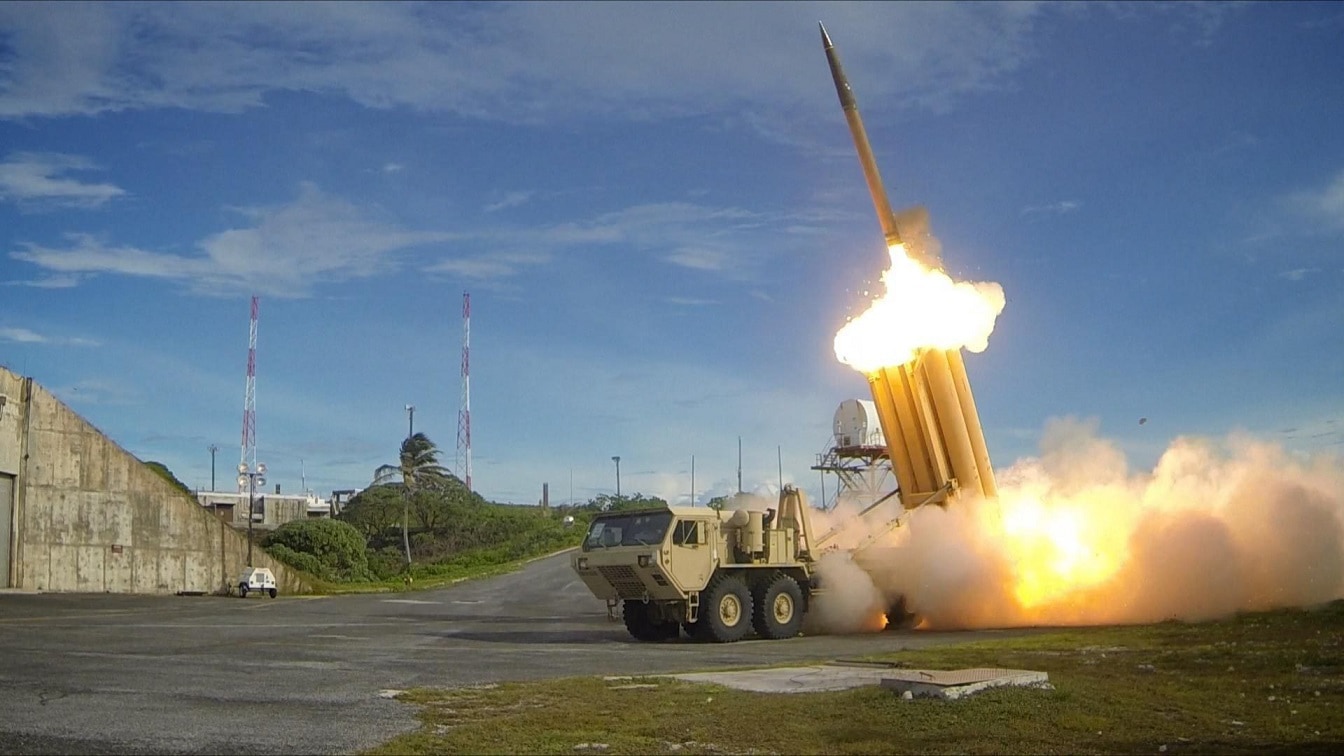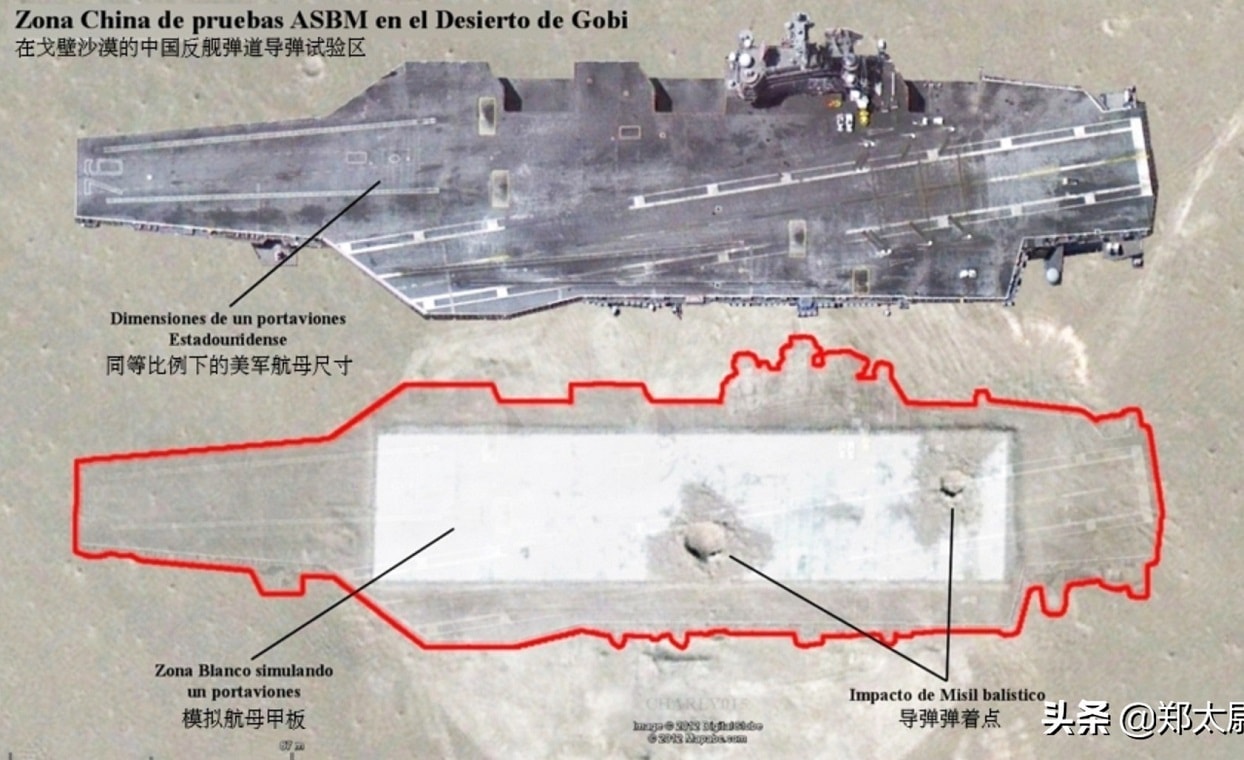Key Points: Guam, a strategic U.S. military hub in the Indo-Pacific, is key to countering China’s growing aggression toward Taiwan and neighboring regions.
-Hosting critical Air Force and naval bases, it enables rapid American responses to regional crises.
-Recognizing its importance, China is developing missile capabilities—particularly the Dongfeng series—to target Guam and undermine American deterrence.
-While China’s massive naval and rocket force expansion poses significant threats, the U.S. is enhancing Guam’s missile defenses and creating advanced contingency plans.
-Continued strategic investment and preparedness are essential for the U.S. to maintain Guam as a robust defense node against China’s potential regional aggression.
How Guam Could Become the Deciding Factor of Potential PLA Aggression
China continues to evolve as the top American adversary in the Indo-Pacific region. With an ever-growing navy and a vaunted rocket force, the Chinese military has the capabilities to project force and intimidate Asian countries at will—countries including Taiwan.
The island of Guam is a major American military asset in the Indo-Pacific that allows the U.S. military to respond to crises in the region. Because of Guam’s strategic position, China knows it will not be able to enact its military plans unhindered on Taiwan and in the South China Sea. This makes the island, and the U.S. strategic assets based there, a prime target for the People’s Liberation Army.
America’s Strategic Positioning in Guam
After the Spanish-American War, Guam became a territory of the United States. Washington saw the island as invaluable for force projection in the Indo-Pacific. The United States has several critical assets based on Guam, such as a Navy and Marine Corps facility, a branch of the U.S. National Guard, and the all-important Andersen Air Force Base.
During the Second World War, the U.S. Pacific Fleet was able to amass forces and logistics on Guam to fight Japan’s imperial ambitions. Later, the island was an important hub for Vietnamese refugees. Guam’s strategic position allows the U.S. Indo-Pacific Command (INDOPACOM) to respond if allies such as Japan, South Korea, or the Philippines come under attack, and to offer steady support to partners such as Taiwan and Indonesia.
Andersen Air Force Base hosts B-1B Lancer and B2 Spirit long-range bombers, which are ready for operations in any armed conflict in the South China Sea, Taiwan Strait, or Korean Peninsula. Guam’s naval facility supports force projection for both the Fifth and Seventh Fleets’ areas of operations, with THAAD and Aegis missile defense systems protecting the island itself.
Furthermore, the naval facilities command for the Marianas region, and the Defense Logistics Agency Indo-Pacific headquarters, are located on the island. Ship support command and a naval munitions command are also located on Guam to oversee resupply and logistics in East Asia.
China’s Growing Military Preparations
As the United States focused for years on anti-terrorism campaigns in the Middle East, China massively increased production in all sectors of its military—it now has the world’s largest navy, as well as its fearsome rocket force. Furthermore, the need to respond to various crises around the globe has left the U.S. military spread thin—giving the People’s Liberation Army Navy (PLAN) opportunities to exploit gaps with military drills around Taiwan and naval provocations against the Philippines.
Chinese President Xi Jinping has made annexing and absorbing Taiwan a top priority for China, and Xi has recently emphasized that all means are on the table—including military measures—to achieve that goal. Not only is China ramping up military drills that emulate blockades of the island nation, but the PLA has also finished construction of new barges that could clear the path for an amphibious landing.
In the South China Sea, the PLAN is taking more aggressive measures by ramming Philippine naval and fishing vessels, which also puts Vietnam in a precarious situation. The United States reaffirmed its mutual defense pact with the Philippines, and the latter is reinvigorating its military to prepare to counter China’s ambitions in the South China Sea.
Learning from the Russian invasion of Ukraine, China’s military is also teaching their troops methods to avoid attacks from first-person view drones. Simultaneously, allegations of Chinese nationals fighting as mercenaries for Russia in Ukraine are raising concerns that such personnel could bring back valuable combat data to feed Beijing’s intelligence apparatus.
Beijing’s Vaunted Dongfeng Missiles Will Target Guam
Beijing’s rocket arsenal is capable of immediately striking key Taiwanese, Japanese, and U.S. military assets in the region—specifically by using its medium- and intermediate-range Dongfeng (DF) missiles. According to a 2024 U.S. Department of Defense report, the People’s Liberation Army Rocket Force (PLARF) has 3,100 ballistic missiles at its disposal. The PLARF will likely turn to the Dongfeng 27 in a conflict with the United States. With an estimated range of 5,000-8,000 kilometers, the DF-27 easily has the range to hit U.S. military bases on Guam.
The PLARF also fields intercontinental ballistic missiles that not only can reach Guam, but are likely nuclear-tipped. The DF-5 and DF-31 variants can deliver nuclear payloads at a range up to 11,000 kilometers, and the DF-41 is capable of launching missiles up to 12,000-15,000 kilometers.
Under China’s nuclear doctrine, the DF-41 would not be used in any scenario short of total war, meaning the DF-27 and the hypersonic YJ-21, which can target aircraft carriers, remain the top threats to American military personnel and assets on Guam.
Contingencies the U.S. Military Needs
Any Chinese conflict against Taiwan, Japan, or the Philippines would require an amphibious buildup that would eclipse the logistics seen on D-Day. That means China’s military would need time to build up its forces and logistical capacity for the attack, tipping off U.S. military commanders and policymakers and giving them ample space to create contingencies to protect assets on Guam.
As part of those plans, Congress in 2023 approved a $1.7 billion integrated missile-defense system to protect critical assets.
In a recent Task & Purpose article, an unnamed U.S. Pacific Fleet spokesman said contingency planning is taking place to prepare for a number of conflict scenarios against the PLA. Indeed, Pentagon planners will need stronger Intelligence, Surveillance, and Reconnaissance capabilities to spot weak points in PLARF missiles and launchers that INDOPACOM can counter.

The first of two Terminal High Altitude Area Defense (THAAD) interceptors is launched during a successful intercept test. The test, conducted by Missile Defense Agency (MDA), Ballistic Missile Defense System (BMDS) Operational Test Agency, Joint Functional Component Command for Integrated Missile Defense, and U.S. Pacific Command, in conjunction with U.S. Army soldiers from the Alpha Battery, 2nd Air Defense Artillery Regiment, U.S. Navy sailors aboard the guided missile destroyer USS Decatur (DDG-73), and U.S. Air Force airmen from the 613th Air and Operations Center resulted in the intercept of one medium-range ballistic missile target by THAAD, and one medium-range ballistic missile target by Aegis Ballistic Missile Defense (BMD). The test, designated Flight Test Operational-01 (FTO-01), stressed the ability of the Aegis BMD and THAAD weapon systems to function in a layered defense architecture and defeat a raid of two near-simultaneous ballistic missile targets
Advanced electronic countermeasures to hinder and blind PLA targeting sensors, and accelerated development of laser weapons, can help prepare American personnel on Guam for a future attack. Strong decoy flares could help throw PLARF missiles off track toward their targets, though military exercises will need to be conducted thoroughly to evaluate this hypothesis.
During a Chinese military buildup, U.S. military assets such as B2 bombers and Ohio-class submarines could evacuate the area, albeit only if a potential PLARF rocket launch was expected beforehand.
Ultimately, thorough layers of defense, and detailed plans for all contingencies, will need to be implemented and explored to prepare for any potential attack on American military assets on Guam by China’s growing and capable rocket force. Though hypersonic missiles and the Dongfeng are not invincible, a war with China will cause American casualties. But through continuous wargaming and preparation, U.S. forces on Guam will be ready to take on an adversary that is a steadily worthier match.
About the Author: Julian McBride
Julian McBride is a forensic anthropologist and independent journalist born in New York. He is the founder and director of the Reflections of War Initiative (ROW), an anthropological NGO which aims to tell the stories of the victims of war through art therapy. As a former Marine, he uses this technique not only to help heal PTSD but also to share people’s stories through art, which conveys “the message of the brutality of war better than most news organizations.” Julian is also a new 19FortyFive Contributing Editor.

